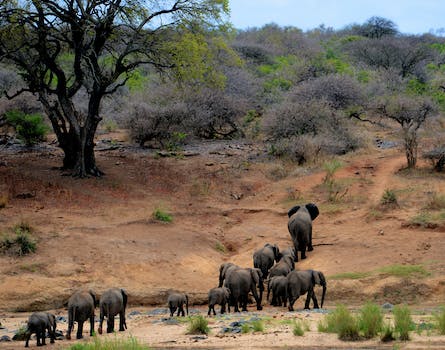Exploring the jungle can be an exciting and rewarding experience, but it can also be a dangerous one if not approached with proper scientific knowledge and preparation. Jungle trekking involves navigating through dense foliage, uneven terrain, and potentially hostile wildlife. In this article, we will explore the scientific aspects of jungle trekking, including the benefits and risks of the activity, as well as tips for a successful and safe adventure.
The Benefits of Jungle Trekking
Jungle trekking offers a variety of benefits for both physical and mental health. The physical activity involved in trekking can help improve cardiovascular health, build muscle strength, and increase endurance. Additionally, spending time in nature has been shown to reduce stress levels and improve overall mental wellbeing.
In addition to the health benefits, jungle trekking allows for unique opportunities to observe wildlife and learn about the ecology of the jungle. Birdwatching, in particular, can be a popular activity for jungle trekkers. The jungle is home to a diverse array of bird species, many of which are not found anywhere else in the world. Observing these birds in their natural habitat can provide valuable insights into their behavior and ecological roles.
The Risks of Jungle Trekking
While jungle trekking can be a rewarding experience, it is important to be aware of the risks involved. The jungle is home to a variety of dangerous wildlife, including venomous snakes, spiders, and insects, as well as large predators such as jaguars and crocodiles. Additionally, navigating through dense foliage and uneven terrain can be physically demanding and increase the risk of injury.
To mitigate these risks, it is important to approach jungle trekking with proper preparation and caution. This includes researching the area beforehand, wearing appropriate clothing and footwear, carrying a first aid kit and navigation tools, and traveling with a knowledgeable guide.
Tips for a Successful Jungle Trekking Adventure
With proper preparation and caution, a jungle trekking adventure can be a memorable and rewarding experience. Here are some tips for a successful trek:
- Research the area beforehand and plan your route
- Travel with a knowledgeable guide
- Wear appropriate clothing and footwear
- Carry a first aid kit and navigation tools
- Stay hydrated and bring enough food and water for the journey
- Be respectful of the environment and wildlife
Conclusion
Jungle trekking can be an exciting and rewarding experience, but it is important to approach it with proper scientific knowledge and preparation. By understanding the benefits and risks involved, and following the tips outlined in this article, you can enjoy a safe and successful jungle trekking adventure.





